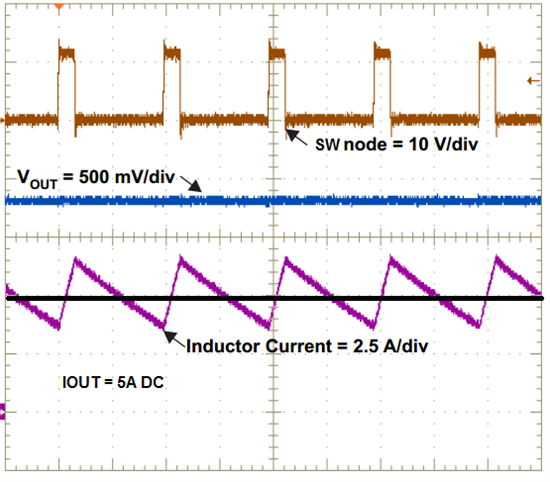Hi,
I was testing a TPS544B20 on my board. In my application VIN = 5V and VOUT = 1.0V. The regulator was working fine at one point but there must have been some type of electrical overstress that caused the regulator to function properly.
I did run some load transient testing on this part. The transient testing was tested in two parts (0-4A) and (4-8A). I set my electronic load to cycle these tests at around 500 Hz.
I then ran some more testing on some other supplies including the 5V that feeds the VIN of this suspect part. There were some problems that did cause some other supplies to be damaged. I was able to fix these problems but I am still not able to get the 1.0V part to work properly.
Symptoms:
1. When I connect an electronic load (EL) to the 1.0V supply and set the EL constant current mode (CC) and try and get 1A out of the 1.0V regulator it won't source that much current. The most I have measured is around 260mA.
2. The Fusion tools report that everything looks good. No faults are present. The Vout is at 1.0V but the current shown is about 250mA.
I probed the COMP, SW and BOOT pins and so far it looks fine except for the switching frequency and ON times don't make sense to me. I need some help in figuring this out. I did take a few scope shots that I can upload.
I also probed the TPS544B20 EVM from TI. I am trying to do a side by side compare but so far I haven't found anything significant. Once again I'm not sure why the switching frequency that is set my the Rt resistor doesn't match what I see on the scope.
I would think that the ON time would vary depending on the load current but I haven't seen this. What am I missing?
Thanks,
Rudy



